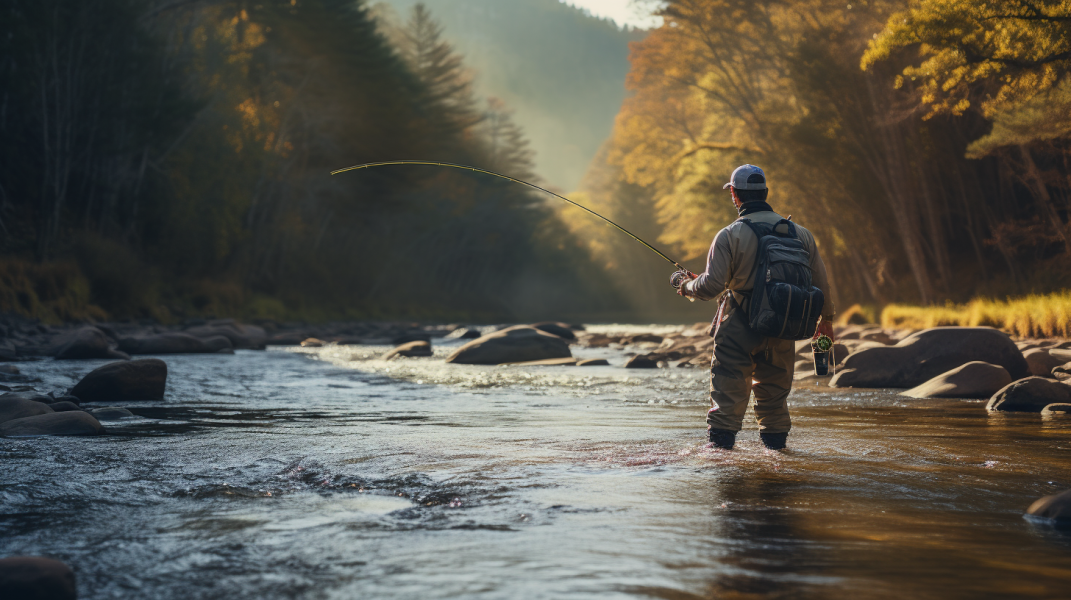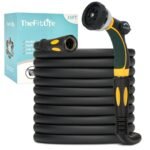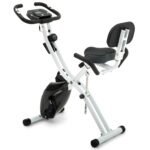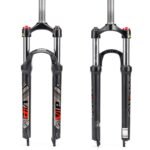Introduction To Beginner Fly Fishing Setup
Are you a beginner angler ready to embark on a thrilling adventure in the world of fly fishing with wet flies and dry flies? Well, you’ve come to the right place!
In this article, we’ll guide you through the process of setting up your very own beginner fly fishing setup. Whether you’re seeking a peaceful escape from the chaos of everyday life or simply want to experience the joy of casting your line in the open waters, fly fishing with dry flies, wet flies, spey rods, and nymphing rigs offers a sense of freedom that is truly unparalleled.
Now, before we dive into the specifics of your fly fishing setup with dry flies and wet flies, let’s take a moment to appreciate the beauty of this sport. Fly fishing with spey rods allows us to disconnect from the hustle and bustle of society and reconnect with nature in its purest form.
There’s something incredibly liberating about standing in a serene river, surrounded by nothing but the sound of flowing water and the gentle whisper of the wind, while catching trout. It’s a chance to escape the confines of our daily routines and immerse ourselves in the untamed beauty of the great outdoors.
In the following paragraphs, we’ll walk beginner anglers through the essential components of a fly fishing setup for trout. From selecting the perfect spey rods and reel to choosing the right flies and accessories, we’ll ensure that you have everything you need to embark on your fly fishing journey with confidence.
So, grab a cup of coffee, sit back, and get ready to embrace the freedom that awaits you on the wild water rivers and streams. Get ready to experience the thrill of fly fishing with dry flies and wet flies, catching trout like never before!
Key Takeaways
- You begin by selecting a fly fishing rod and reel that you can be comfortable with, maybe for several seasons. If you’ve never tried fly fishing before, you might go to a place that offers advice on how to choose the correct rod and reel to fit your needs.
- Next, start to get to know and understand fishing line made specifically for fly fishing. You will definitely want to know more about floating and sinking lines.
- Choosing the right fly, whether it’s dry flies or nymph flies, is crucial for successful fly fishing. Whether you’re targeting trout or using spey rods, selecting the appropriate fly can make all the difference in your fishing experience.
- Having a variety of flies increases the chances of catching fish for fly fishers in various fishing situations. It is important for beginners to invest in a beginner fly fishing combo, which includes high-quality fly fishing rods.
- A tapered monofilament leader is recommended for beginners
- Essential accessories for beginners and experienced anglers fly fishing setup include fishing polarized sunglasses, a fly fishing vest or pack, waders and boots, a fly fishing hat, dry flies, and spey rods.
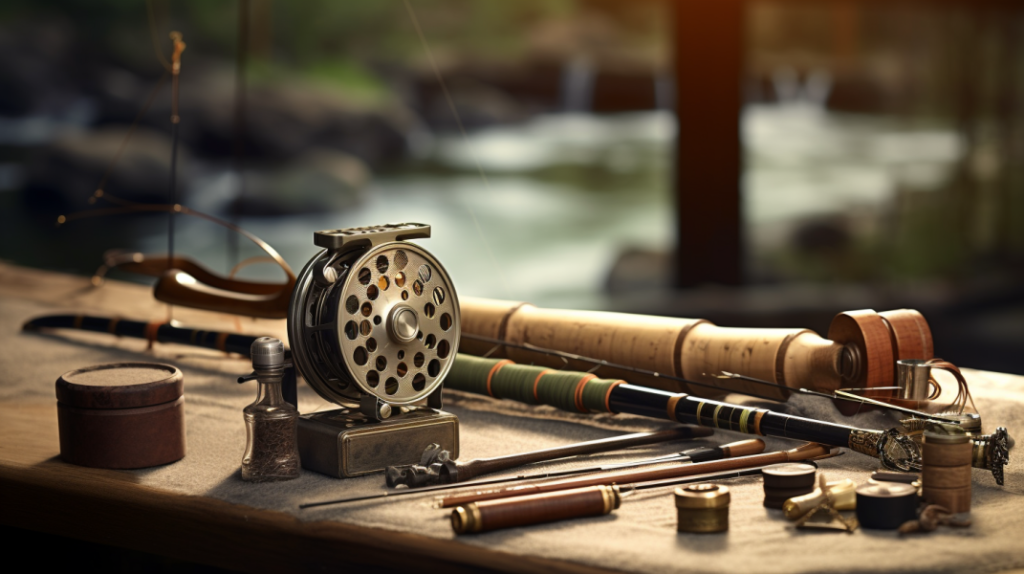
Beginner Fly Fishing Gear Guide: Must-Have Equipment for Fly Fishing
- Fly Rod and Reel: A good quality fly rod and reel are essential for fly fishing. Look for a rod that is lightweight and flexible, with a medium-fast to fast action. The reel should have a smooth drag system and be able to hold the appropriate weight of line.
- Fly Line: Choose a fly line that matches the weight of your rod and reel. Floating lines are great for beginners as they are easier to cast and control. You can also consider getting a sinking line for fishing in deeper waters.
- Leader and Tippet: Leaders are tapered pieces of monofilament or fluorocarbon line that connect the fly line to the fly. Tippets are additional sections of lighter line that are attached to the end of the leader. It’s important to have a range of leader and tippet sizes to match different fishing conditions.
- Flies: Flies are the artificial lures used in fly fishing. As a beginner, it’s best to start with a selection of basic patterns such as nymphs, dry flies, and streamers. It’s also a good idea to have a variety of sizes and colors to match the insects or baitfish in the water.
- Fly Box: A fly box is used to store and organize your flies. Look for a waterproof and durable box with compartments or foam inserts to keep your flies secure. It’s helpful to label the flies or use a fly box with clear lids for easy identification.
- Waders and Boots: If you plan on fishing in rivers or streams, a pair of waders and boots are essential. Waders keep you dry and comfortable while boots provide traction on slippery surfaces. Look for waders made of breathable materials and boots with sturdy soles.
- Accessories: There are a few accessories that can enhance your fly fishing experience. These include a landing net to safely handle and release fish, a fly fishing vest or pack to carry your gear, and a pair of polarized sunglasses to reduce glare and improve visibility on the
Fishing Rod and Reel
Now, let’s talk about the fishing rod and reel you’ll be using for your beginner fly fishing setup. Finding the right rods and reels is crucial for anglers, especially beginners, to ensure a successful and enjoyable fishing experience with dry flies. When it comes to fly fishing techniques, having the appropriate equipment, such as rods and reels, can make all the difference.
Firstly, let’s discuss the fly rods. As a beginner fly fisher, it’s best to start with a medium action fly rod. This type of rod provides a great balance between flexibility and stiffness, making it easier for you to learn and execute different casting techniques. Look for a fly rod that is around 9 feet long, as this length allows for better control and casting accuracy. Additionally, opt for a fly rod with a weight rating of 5 or 6, as this’ll give you the versatility to fish for various species. As for the fly reel, it’s important to choose one that complements your fly rod. Make sure the fly reel is designed to handle the weight of your fly line and backing. A good quality fly reel will have a smooth drag system, allowing you to easily control the line when fighting fish. Speaking of fly lines, the forward fly line is an essential component for casting.
Next, let’s move on to the fishing reel for beginner anglers targeting trout. As a beginner, a reel with a simple design and smooth drag system is ideal for trout fishing. Look for a reel that is large enough to accommodate the weight of the fly line and backing you’ll be using for trout fishing. It’s important to note that the reel doesn’t play as significant a role in fly fishing for trout as it does in other types of fishing. However, a good quality reel with a reliable drag system can make a difference when fighting larger trout.
Now that we’ve covered the fishing rods and reels for beginners, let’s move on to the next section about fly line and backing. This’ll complete your beginner fly fishing setup and equip anglers with the essentials needed to start casting and catching trout.
Great Examples for a Beginner Fly Fishing Kit
Redington Crosswater Rod Outfit
When it comes to getting started, having the perfect beginner kit can make all the difference. One popular option is the Redington Crosswater rod outfit. This kit includes a graphite rod, reel, and line, making it a convenient all-in-one package for beginners.
The Crosswater outfit also comes with a lifetime warranty, giving new anglers peace of mind. With its fast action and durable construction, this beginner kit is designed to withstand the rigors of learning to fly fish for years to come.
However, some users have noted that the reel seat on the Crosswater outfit can be a little bit uncomfortable during long outings.
Orvis Clearwater Beginner Kit
Another great option for beginners is the Orvis Clearwater beginner kit. This set includes a Clearwater rod, reel, line, and leader, providing everything you need to get started.
The Clearwater rod features alignment dots, making it easy to set up and use correctly. The kit also comes with a helpful book and instructional videos, making it a great choice for those who want to learn at their own pace. With its moderate action and versatile performance, the Orvis Clearwater beginner kit is a reliable option for new fly fishers.
Echo Base Nymphing Rig for Euro Nymphing
For those interested in Euro nymphing, the Echo Base nymphing rig is a top choice. This set includes an Echo Base rod, reel, and nymphing line, specifically designed for this specialized technique.
The Base rod has a sensitive tip and a powerful butt section, allowing for precise control and accurate presentations. The included nymphing line is designed to be highly visible and sensitive, making it easier to detect subtle strikes. With its Euro nymphing-specific features, the Echo Base nymphing rig is a great option for beginners looking to dive into this exciting style of nymphing.
Choosing the Correct Action Fly Rod: Medium vs Slow Action
When it comes to choosing the correct fly rod, understanding the differences between medium action and slow action is crucial. Both types have their advantages and disadvantages, so it’s important to consider your style and preferences before making a decision.
Medium action fly rods are known for their versatility. They have a flexible tip that allows for delicate presentations and accurate casting. These rods are great for anglers who enjoy a variety of techniques, including dry , nymphing, and even some light streamer types.
Medium action rods provide a good balance between power and finesse, making them suitable for a wide range of conditions. This is a good choice for beginners.
On the other hand, slow action fly rods are more forgiving and easier to control. They have a slower, more relaxed flex that allows for a smooth and graceful casting stroke. Slow action rods are ideal for anglers who prioritize accuracy and precision over distance.
They excel in situations where a delicate presentation is necessary, such as small streams or targeting spooky trout. However, their slower action may make it more challenging to cast heavy flies or deal with windy conditions.
Ultimately, the choice between a medium action and slow action fly rod depends on your individual style and preferences. If you enjoy a variety of techniques and want a rod that can handle different situations, a medium action rod may be the best option for you.
On the other hand, if you prioritize accuracy and finesse and primarily fish in small streams or target spooky fish, a slow action rod may be more suitable.
Before making a purchase, it’s always a good idea to test out different rods if possible. This will give you a better sense of how they feel and perform in real fishing situations. Getting advice from a pro shop is encouraged for purchasing the correct rod and reel combo.
Additionally, consider seeking advice from experienced anglers or visiting a local fly shop for personalized recommendations. By taking the time to choose the correct action fly rod, you can enhance your experience and increase your chances of success on the water.
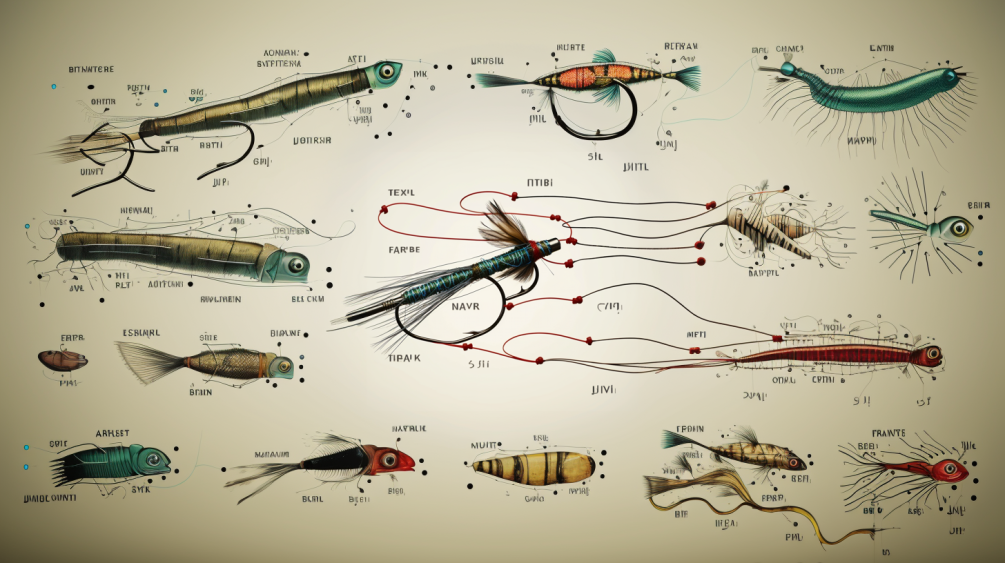
Fly Line and Backing
When it comes to fly fishing for trout, anglers must understand the various types of fly lines available. These lines are essential for casting flies and reeling in the catch.
To have a successful fishing experience, we need to determine the appropriate line weight for our fishing conditions. This is crucial when using fly rods and fly reels, especially when targeting trout with dry flies.
Additionally, as beginner anglers, we should also learn about the importance of backing when setting up our fly fishing equipment for trout.
Understand the Different Types of Fly Lines
First, let’s dive into the various types of fly lines you’ll encounter as a beginner fly fisherman in different fishing situations. When it comes to fly lines, there are two main categories you should be familiar with: floating and sinking lines. These lines are essential for any fishing guide and are crucial fishing gear for using fishing rods.
A fishing guide recommends using a floating line for delicate and accurate fly presentation on the water’s surface. Conversely, a sinking line is ideal for targeting fish at various depths. Both fishing rods and fishing combos can be used with these lines.
Now, let’s explore the differences between weight forward (WF) and double taper (DT) fly lines for fly rods. A weight forward fly line has a heavier front section, which helps you cast longer distances with ease using a fly reel. It’s a great choice if you’re fishing in larger bodies of water or if you need to cast a dry fly in windy conditions with a fly leader.
On the other hand, when using a double taper line with lightweight fly rods and a weight fly reel, you can achieve more delicate presentations and better control when fishing at shorter distances with dry flies of any size.
Understanding the different types of fly lines, such as weight-forward and sinking lines, is crucial in determining the appropriate line weight for your fishing conditions. By considering factors such as the type of water you’ll be fishing, the species you’ll be targeting, and the weather conditions, you can choose a line that will optimize your chances of success on the water. Make sure to select the right size reel and learn how to tie a strong knot to secure your line.
So, let’s move on to the next section and explore how to determine the appropriate line weight for your specific fishing needs with fly rods and fly reels.
Determine the Appropriate Line Weight for your Fishing Conditions
To optimize our chances of success on the water, it’s crucial to determine the appropriate line weight and reel size for our specific fishing needs. Choosing the right fly line weight and knot for different fish species is vital in ensuring we have the power and control necessary to effectively present our flies and land the fish. It’s also important to consider the size of our rods when selecting the appropriate line weight.
When it comes to fly fishing, the line weight, reel, knot, and rods are all important factors to consider. The line weight refers to the thickness and density of the line, which is great for targeting different sizes of fish. It’s important to choose the appropriate line weight based on the type of water and flies being used.
For smaller fish species like trout, a lighter line weight such as a 3 or 4 weight is typically sufficient for fly rods. These lines are more delicate and allow for precise presentations of dry flies, which is important when fishing in clear and calm waters. A high-quality fly reel is also essential for smoothly controlling the line as you cast and reel in your flies.
On the other hand, when targeting larger fish species like salmon or bass, a heavier line weight such as an 8 or 9 weight fly fishing rod may be necessary. These fly fishing rods provide the casting power and strength needed to handle bigger flies and overcome the resistance of larger fish.
It’s important to match the line weight of our fly rods to the fishing conditions to ensure we have the right balance of finesse and strength to effectively catch fish with our desired dry fly. The right fly reel is also crucial in this process, as it helps us control the line and make accurate casts. Additionally, having the right flies for the specific fishing conditions is essential for success.
Now that we have a better understanding of how to choose the appropriate line weight for fly fishing, let’s learn about backing and its importance in fly fishing. Backing is crucial when using a fly rod and reel as it helps to prevent the line from breaking and ensures a secure connection between the line and the reel. It is typically attached to the reel using a knot.
Learn about Backing and its Importance
Discover the crucial role that backing plays in our fly fishing gear, including the rod, reel, and flies, and why it’s essential for a successful angling experience. Learn how to tie the perfect knot to secure your backing to your reel.
Backing looks like a thin, strong string that is attached to your fly reel. It may not seem important, but it plays a crucial role in fly fishing. When you hook a big fish, the backing provides extra line that can be pulled out.
This prevents the fish from breaking your fly line or pulling all of it off your reel. So, even though it may not be visible when you’re out on the water, backing is an essential part of your beginner fly fishing setup.
When it comes to fishing rods, the importance of a fly reel cannot be overlooked. Backing is an essential component of your fishing combo setup for several reasons. It serves as an important extension of your fly line, especially when targeting freshwater fish.
- By attaching backing to your fishing rod and reel combo, you increase its line capacity, allowing you to target larger fish or fish in deep waters without worrying about running out of line. This is especially useful when using flies as bait and tying a secure knot.
- Fighting Power: Backing provides additional strength and resistance when you’re battling a strong fish with your fishing combo. It absorbs the initial shock and allows you to tire out the fish before it reaches the end of your fly line, using your fishing rod and reel.
- Prevents Line Breakage: When a fish makes a sudden run, there’s a risk of the fishing line breaking if the fish is too powerful or if there are obstacles in the water. Backing acts as a buffer, reducing the strain on your fishing rod and preventing it from snapping.
- Versatility: With backing, you can easily switch out different fly lines depending on the fishing conditions. It allows you to quickly change from a floating line to a sinking line or vice versa, giving you more flexibility in your angling approach. Additionally, having the right size rod and reel is crucial for success in fly fishing.
Understanding the importance of backing is just one step towards creating a well-rounded fly fishing setup with the right flies, rod, and reel.
Now that we’ve covered the role of backing, let’s move on to the next crucial element: selecting the right flies for catching big fish in freshwater. The proper fly selection is essential as it determines the success of your reel.
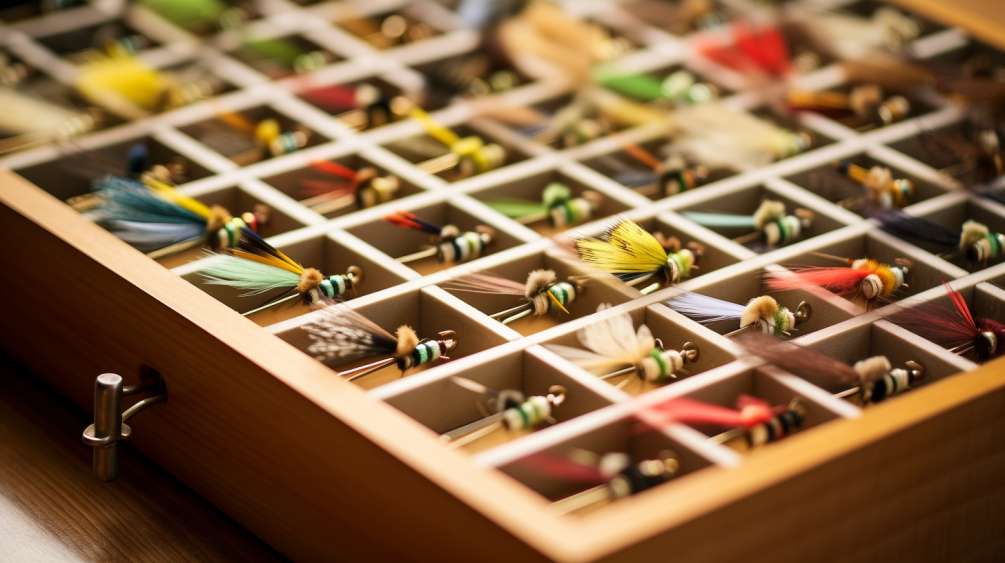
Fly Selection
Get ready to reel in some big catches with the right fly selection for your beginner fly fishing setup! As a beginner, choosing the right fly rod can be a bit overwhelming, but it’s an essential part of the fly fishing experience. The type of fly you choose will depend on the specific conditions you’ll be fishing in, such as the type of water, weather, and the species of fish you’re targeting. To make it easier for you to understand, let’s take a look at a table that breaks down different types of flies based on their rod characteristics.
| Fly Type | Characteristics | Best Use |
|---|---|---|
| Dry Flies | Floats on water | Surface fishing for feeding fish |
| Wet Flies | Sinks below water surface | Subsurface fishing for actively feeding fish |
| Nymphs | Imitate aquatic insects in their nymph stage | Fishing below the water surface for trout and other species that feed on nymphs is a popular technique among anglers who prefer using dry fly rods, fly lines, and flies. |
| Streamers | Imitate small fish or other baitfish | Aggressive fish targeting larger prey |
By having a variety of flies in your beginner fly fishing setup, you’ll be prepared for different fishing situations and increase your chances of success with your rod and reel. It’s also worth mentioning that you can start fly fishing by using store-bought flies, or you can explore the art of fly tying to customize your own flies. Fly tying is a fascinating process that allows you to create unique patterns and experiment with different materials, enhancing your fishing experience with a personal touch. It can be a rewarding hobby in itself.
Now that you have a better understanding of fly selection, let’s move on to the next important aspect of your beginner fly fishing setup: leader and tippet. These components, along with the flies, rod, and reel, are crucial for presenting your fly to the fish in a natural and enticing manner. So, let’s dive into the world of leader and tippet and discover how they can enhance your fly fishing skills.
Leader and Tippet
After carefully selecting the perfect flies for our fishing adventure, it’s time to focus on the next crucial components of our beginner fly fishing setup: the reel, rod, leader, and tippet. The reel and rod are essential tools for casting and reeling in fish, while the leader and tippet connect the fly line to the fly itself.
Choosing the right leader, tippet, fly rod, fly line, fly reel, and flies combination is essential for achieving a natural presentation and ensuring a successful fishing experience.
- Leader Types: There are various leader types available for fly fishing, but for beginners, a standard monofilament leader is a great choice. It offers versatility and is suitable for most fishing conditions when paired with a fly rod, fly line, and fly reel. Another option is a fluorocarbon leader, which has the advantage of being nearly invisible underwater. This can be beneficial when fishing in clear waters or targeting spooky fish with flies. Whichever leader type you choose, make sure it is tapered, as this allows for smoother turnover and better accuracy when casting with a fly rod.
- Tippet Material: The tippet material is the final link between the leader and the fly, and it plays a crucial role in presentation and strength. Fluorocarbon tippet is a popular choice due to its low visibility in the water and excellent abrasion resistance for fishing with flies. It sinks quickly and is less prone to tangling, making it ideal for nymphing or fishing deep with a rod. Nylon tippet, on the other hand, is more affordable and offers excellent knot strength for using a reel. It is a great choice for dry fly fishing or when targeting smaller fish. Ultimately, the choice of tippet material will depend on the specific fishing conditions and personal preference.
- Other Essential Fly Fishing Accessories: Now that we have our leader, flies, rod, reel, and tippet sorted, it’s important to consider a few other essential accessories to complete our fly fishing setup. A good pair of polarized sunglasses is essential for spotting fish and protecting our eyes from the sun’s glare. Additionally, a fly fishing vest or pack can keep all our gear organized and easily accessible. Don’t forget a landing net for safely handling and releasing fish, as well as a fly fishing hat to shield us from the elements. With these accessories in place, we’ll be fully prepared for our fly fishing adventure and ready to immerse ourselves in the freedom of nature’s playground.
Transitioning seamlessly into the subsequent section about ‘other essential fly fishing accessories,’ it’s important to remember that having the right gear like flies, rod, and reel alone is not enough. To truly embrace the freedom fly fishing offers, we need to equip ourselves with the necessary tools and knowledge. So, let’s dive into the world of fly fishing accessories and discover how they can enhance our experience on the water.
Other Essential Fly Fishing Accessories
To fully immerse ourselves in the freedom of nature’s playground, it’s crucial to have the right gear and knowledge. This includes having the appropriate fly fishing rods and fly line, as well as a beginner fly fishing combo to get started.
While the rod, flies, and reel are essential for successful fly fishing, there are other accessories like waders and boots that can enhance our experience on the water. These waterproof garments allow us to wade into the river, getting closer to the fish and improving our casting position. With the right waders and boots, we can confidently navigate through the water, feeling the rush of the current against our legs, and experiencing a deeper connection with nature.
Another essential accessory for fly fishing is a fly fishing vest. This versatile piece of gear keeps all our essential tools and equipment for rod and reel within reach. With multiple pockets and compartments, we can easily store our fly boxes, tippet spools, leaders, and other accessories for rod and reel. The vest also acts as a convenient workstation, allowing us to change flies, tie knots, and organize our gear for rod and reel on the go. As we explore the river, the vest becomes our trusted companion for rod and reel, giving us the freedom to focus on the thrill of the chase without worrying about misplaced gear or tangled lines for rod and reel.
In addition to waders, boots, and a fly fishing vest, having the right accessories like flies, a rod, and a reel can greatly enhance our fly fishing experience. A hat with a brim provides shade from the sun and reduces glare on the water, allowing us to spot fish more easily. Polarized sunglasses are also a must-have, as they not only protect our eyes from harmful UV rays but also help us see beneath the water’s surface, revealing the hidden world of fish and their habitat. And let’s not forget a reliable fly fishing net, which allows us to safely land and release our catch, ensuring the preservation of the fish population and the continuation of our fly fishing adventures.
With the right gear, including waders, boots, flies, a rod, a reel, a fly fishing vest, and other essential accessories, we can fully embrace the freedom of fly fishing. As we step into the river, donning our waders and boots, we feel a sense of liberation and anticipation. The fly fishing vest keeps us organized and ready for any situation, while other accessories like a hat, sunglasses, and a net enhance our overall experience.
So let’s gear up with our flies, reel, and rod, hit the water, and let the freedom of nature’s playground guide us on our fly fishing journey.
Putting It All Together: Assembling Your Fly Fishing Setup + Budget Options
When it comes to assembling your fly fishing setup, there are budget-friendly options available that can help you get started without breaking the bank. Here are some suggestions for budget options:
- Fly Rod: Look for a beginner-friendly fly rod that offers good value for money. There are several affordable options available in the market that are suitable for beginners. Consider a rod with a medium-fast action, as it provides a good balance between power and flexibility.
- Fly Reel: For a budget-friendly option, you can opt for a reel that offers basic functionality without compromising on quality. Look for a reel with a smooth drag system and a durable construction. While it may not have all the bells and whistles of a higher-end reel, it should still perform well for your fishing needs.
- Fly Line: When it comes to fly line, you don’t necessarily need to go for the most expensive option. Look for a weight-forward floating line that matches the weight of your fly rod. This type of line is versatile and suitable for a variety of fishing situations. Consider a line with a durable coating to ensure longevity.
- Leader and Tippet: For leaders and tippets, you can find affordable options that offer good performance. Look for leaders made from monofilament or fluorocarbon material, as they provide good strength and abrasion resistance. Tippets should be strong enough to handle the fish species you are targeting.
- Flies: Building a collection of flies can be expensive, but there are budget-friendly options available. Consider purchasing fly assortments or starter kits that offer a variety of flies at a reasonable price. You can also tie your own flies to save money in the long run.
- Accessories: Don’t forget about the essential accessories such as fly boxes, nippers, forceps, and floatant. Look for budget-friendly options that offer good quality and functionality. These accessories are important for maintaining and using your fly fishing setup effectively.
Remember, while budget options may be more affordable, it’s important to still prioritize quality and functionality. Look for products that offer good value for money and are suitable for beginners.
It’s also worth considering purchasing used gear or looking for sales and discounts to save even more money. Call Pawn Shops in your area and ask them if they have used fly fishing equipment.
By being strategic and resourceful, you can assemble a budget-friendly fly fishing setup without compromising on performance.
Frequently Asked Questions
What are the different types of fishing rods and reels available for beginner fly fishing setups?
When it comes to fly fishing, there are a variety of fishing rods and reels available for beginners. We have a range of options to choose from, depending on the type of fly fishing flies you plan to use and the beginner fly fishing techniques you want to learn.
From lightweight and flexible fly fishing rods to sturdy and durable ones, we have it all. Our fly fishing reels are designed to provide smooth and effortless casting, making it easier for beginners to get the hang of fly fishing for flies.
So whether you’re interested in dry fly fishing or nymph fishing, we have the perfect setup with flies, rod, and reel to help you enjoy the freedom of the water and the thrill of the catch.
How do I choose the right weight and type of fly line and backing for my fly fishing setup?
When it comes to choosing fly fishing gear, one of the most important decisions you’ll make is selecting the right weight and type of fly line, rod, reel, and backing.
The weight of the fly line determines how it will cast and the size of the flies it can handle. It’s crucial to match the weight of the line to the weight of the fly rod you’re using, as well as the reel.
The type of fly line and rod you choose depends on the fishing conditions and the species you’re targeting. Floating lines and reels are great for most situations, while sinking lines are ideal for fishing deeper waters.
As for the rod, it’s the line that goes on your reel before the fly line. It serves as an extra line in case a fish takes a long run, and it also helps balance your setup with the flies.
So, when choosing fly line weight and backing options for your fly reel, consider the fishing conditions, the size of your fly rod, and the species you’re after. It’s all part of the joy of fly fishing, where the possibilities are endless, and the feeling of freedom is always just a cast away.
What are some popular fly patterns that beginners should consider for different fishing conditions?
When it comes to popular fly patterns for trout, there are a few classics that beginners should definitely consider. The Elk Hair Caddis is a versatile pattern that imitates a variety of insects and is a go-to choice for many anglers who use flies, rod, reel.
The Adams fly is another timeless option that works well in a range of conditions for fishing with a rod. The Adams fly is particularly effective for catching flies.
If you’re a beginner looking for a fly fishing combo, the popular patterns for targeting bass include the Clouser Minnow and the Woolly Bugger. These patterns are known for their ability to mimic baitfish and are effective in enticing bass to strike. Make sure to pair them with a fly fishing rod, such as a weight fly fishing rod, for optimal results.
Whether you’re chasing trout or bass, having these popular fly patterns and a reliable rod in your arsenal can greatly increase your chances of success on the water. So why not give these flies a try and experience the thrill of fly fishing freedom?
How do I properly attach a leader and tippet to my fly line?
When it comes to attaching tippet to a leader using a beginner fly fishing combo, such as a fly line and fly rod, it’s important to follow a few simple steps. Make sure to choose the appropriate weight fly fishing rod for the best results.
Here’s how to attach a tippet to a leader:
- Ensure that your leader, tippet, fly rod, and fly line are the correct size and strength for your fishing needs.
- Take the end of your leader and thread it through the eye of the fly line, creating a loop around the rod.
- Thread the end of your tippet through the loop of your fly line, forming a double overhand knot to securely attach the tippet to the fly line.
- Pull the knot tight and trim any excess tippet.
This method ensures a secure connection between the rod, leader, and tippet, allowing for smooth casting and presentation of your fly.
Troubleshooting common leader and tippet problems in fly fishing can be frustrating, but with a little patience, they can be easily resolved. Whether it’s a fly line issue or a fly rod problem, using the right weight fly fishing rod or investing in a high-quality fly fishing combo can make all the difference.
If you find that your fly fishing combo’s leader and tippet are constantly tangling, try using a tippet ring with your fly rod to create a more streamlined connection. This can be especially helpful when using a weight fly fishing rod.
Additionally, if you’re experiencing break-offs or weak connections while using your fly fishing rod and fly line, check the strength of your knots and consider using a stronger tippet material in your fly fishing combo.
Remember, the key to successful fly fishing lies in the details, and properly attaching your leader and tippet to your rod is an essential part of that process.
So embrace the freedom of the water, and enjoy the thrill of casting your fly fishing rod into the unknown.
Besides the basic fly fishing essentials, are there any other accessories that can enhance my fly fishing experience?
When it comes to enhancing your fly fishing experience, there are a multitude of rod accessories that can take your adventure to the next level.
From fly fishing accessories like a good quality fly vest or waist pack to keep all your gear, including your rod, organized and easily accessible, to a waterproof fly box to protect your precious flies, these little extras can truly make a difference.
Additionally, investing in a quality pair of polarized sunglasses can not only enhance your visibility while using a fly fishing rod on the water but also protect your eyes from harmful UV rays.
And let’s not forget about the importance of having the right gear for the best places to go fly fishing. Whether it’s a sturdy wading staff for navigating rocky riverbeds or a reliable landing net to safely land and release your catch, these accessories can make your fly fishing experience more enjoyable and successful.
So, don’t be afraid to splurge on some fly fishing accessories and explore the freedom and beauty of the best places to go fly fishing.
Conclusion
In conclusion, we’ve explored the essential components of a beginner fly fishing setup. From the fishing rod and reel to the fly line and backing, each piece plays a crucial role in ensuring a successful fishing experience.
By selecting the appropriate flies and using the right leader and tippet, anglers can increase their chances of attracting and hooking fish. Additionally, having the necessary fly fishing accessories, such as a net, forceps, and fly floatant, can greatly enhance the overall fishing experience.
As beginners, it’s important to remember that practice makes perfect. Fly fishing requires skill and technique, which can only be developed through time on the water. So, be patient and persistent in honing your skills. Don’t be discouraged by initial challenges, as they’re part of the learning process.
Seek guidance from experienced anglers, take lessons if possible, and most importantly, enjoy the beauty of nature that surrounds you while fly fishing. With dedication and a well-equipped setup, you’ll soon find yourself hooked on the exciting world of fly fishing.

Meet Kevin Goodell, your outdoor adventure coach! With a passion for nature ignited in childhood, Kevin brings a wealth of experience and expertise to simplify tough outdoor skills. As a U.S. Army veteran and former Sergeant, he has honed his leadership and teamwork abilities while developing a deep love for the great outdoors.
Kevin’s dedication to outdoor activities spans biking, birdwatching, national park trips, and archery/golf. With his friendly and approachable demeanor, he is committed to guiding individuals of all ages and skill levels towards unforgettable outdoor experiences.
Harnessing his extensive knowledge and personal achievements, Kevin is your go-to resource for learning and enjoying various outdoor pursuits. Whether you seek thrilling adventures or serene nature escapes, Kevin’s professional yet friendly approach will ensure an engaging and informative experience. Embark on your next outdoor adventure with Kevin Goodell and embrace the beauty of nature like never before.

